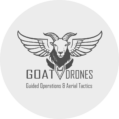The potential of drones to provide aerial tactical support in any emergency operation or technical inspection is already well known. The use of drones in outdoor or open field scenarios is the daily bread for the UAS pilot. But in today’s article I want to share a series of considerations about the use of drones in indoor or confined spaces.
The first handicap we may encounter is the absence of GNSS constellations that support automatic three-dimensional positioning of the drone. We are used to GPS, GLONASS, GALILEO or BEIDOU satellites (and, possibly in the future, those of Starlink and its European and Asian competitors) helping us to keep the drone in the righ place for us, even if we release the sticks in our RC. This is the normal way of handling commercial drones, in fact. But, as we can imagine, in enclosed spaces the GNSS signal is lost.
The drone then goes into ATTI or Altitude Hold mode, in which, thanks to its barometer or lower visual (or other) sensors, it is able to maintain its altitude above the ground but horizontally it is a victim of drift. A drift that can be produced not only by wind or air flows (which in an indoor space can easily occur) but also by the turbulences generated by the movement of the drone in the indoor space. The closer the drone is to the walls, the more it will be attracted to them (almost like a suction cup effect). To which we must add the ground effect itself when flying at low altitude. And yes, that happens with small drones too.

Handling a drone in ATTI mode requires some expertise on the part of the UAS pilot but there is something even more dangerous: the moment when the drone approaches the exit and reconnects with satellites. You have enough of them to exit ATTI mode but not enough for the positioning to be entirely accurate, which can lead the drone to an erratic movement ending in an out of control crash (more likely the narrower the exit). In fact, during my time at High Line Division Unmanned Systems we participated in a pilot test for Elewit where we were to inspect a junction chamber. Leaving aside the details, we will say that to avoid this risk we disabled the GNSS board to force a permanent ATTI. You can read more in this article if you wish.
And not so much for the issue of drone positioning. As you can see from reading the above, operating a drone in an indoor space carries additional risks, and this is where I can provide you with the following tips:
- Protect the propellers. Really, no matter how good a pilot you think you are, use propeller guards or, if available, a protective dome or sphere. Assume that the question is not whether the drone will hit an obstacle, the question is when it will happen.
- Configure the failsafe (RTH?). As far as the UAS allows it, configure the failsafe to be a landing or stationary flight, but not a return home that could generate an accident, since in most cases the drone gains altitude (set by default) to then return to the takeoff point. It is true that this will only happen if the UAS has GNSS, but this is not impossible. It is also true that drones are coming onto the market that allow an intelligent return home by visual positioning. In any case, keep this factor in mind.
- Manage the signal. Unless you have a tethered drone that transmits the control signal via cable (which involves its own logistics) you must be very careful when introducing your drone in an enclosed space, especially if you have to move through galleries that make curves. You can lose the signal within a few meters. You can either introduce an antenna extension into the confined space or, if it is a repetitive inspection, install signal repeaters.
- Manage the battery. Nothing new for a UAS pilot: make sure the drone returns home under its own power with the autonomy it has.
All of the above will help you to avoid human staff having to enter to rescue the drone. Which could be ironic if the intention of introducing the drone in the confined space was precisely to avoid putting people at risk (measurement of radiation, gases, oxygen, collapsed spaces…).
In GOAT Drones Solutions we have several equipments prepared for its handling in indoor spaces and with them we can provide the following services:
- Visual inspection of collapsed space. In our quest for operational safety, we ensure that a building in the process of collapse, whether due to a natural catastrophe, gas explosion or any other, is safe enough for a human team to enter.
- Inspection for oxygen, toxic or explosive gases or radiation. With the same objective, we can give a binary answer to whether the emergency team can enter at that instant or if it requires a NBC equipment or oxygen mask.
- Quick videogrammetry. Whether for a back office inspection by engineering team or to generate a digital twin to immortalize the space in case it collapses, in a matter of minutes we can perform the flight, process the video in the cloud and deliver a digital twin. In minutes instead of hours or days.
Do you have any questions or would you like to request a free quote? Use the form below:

